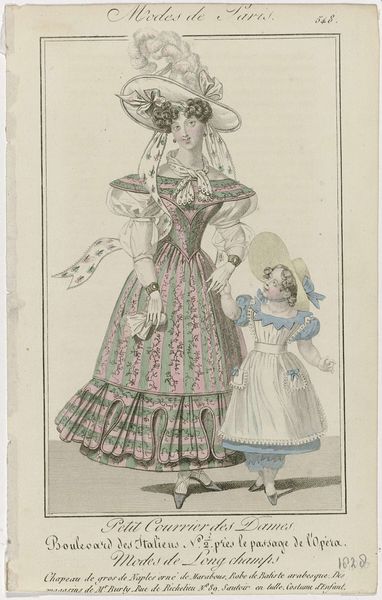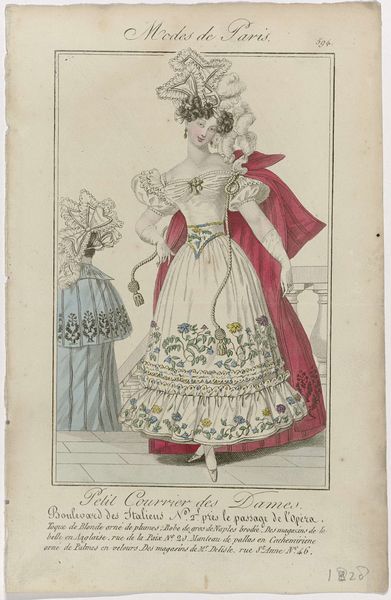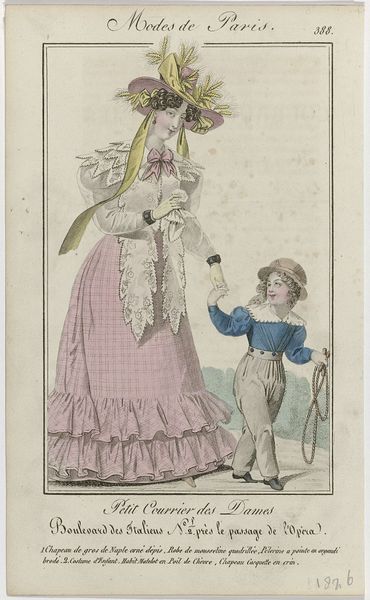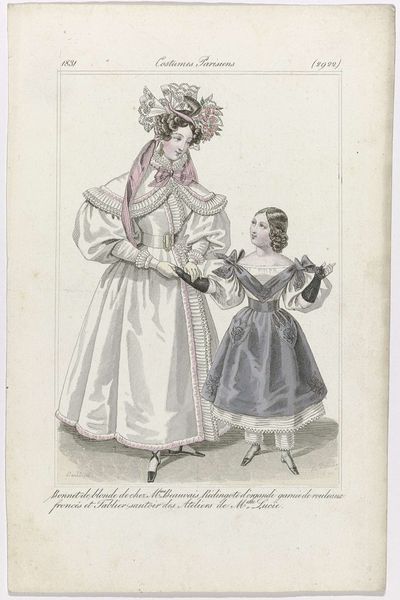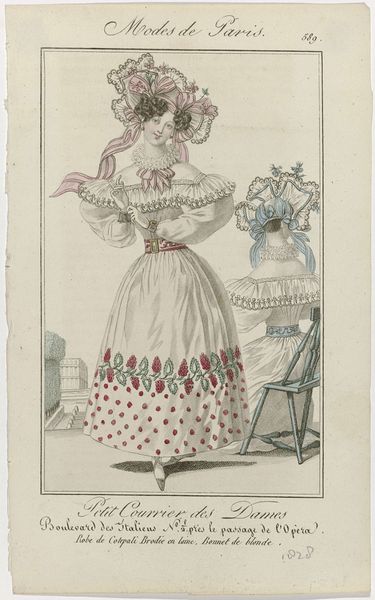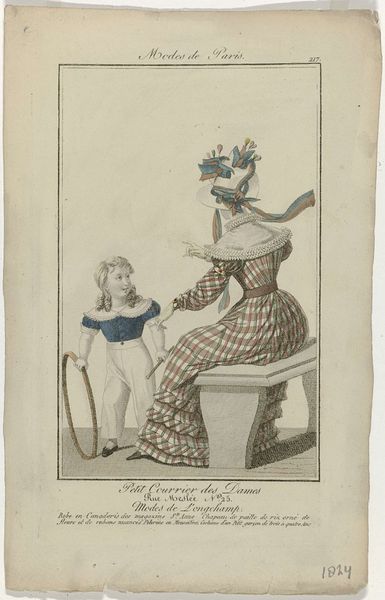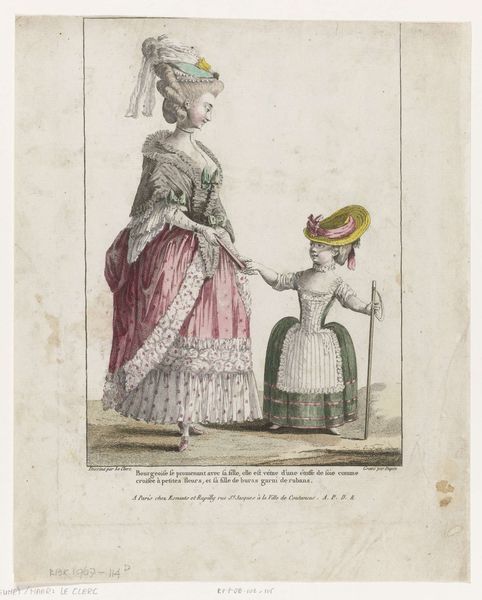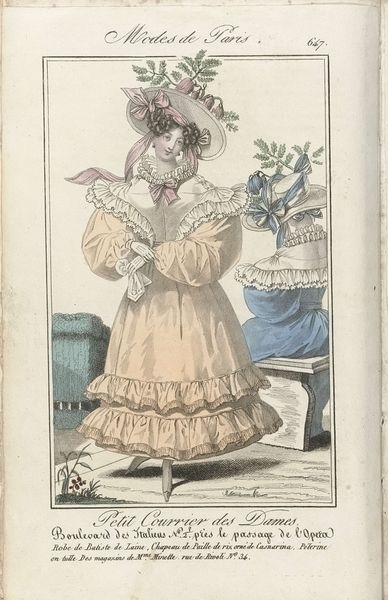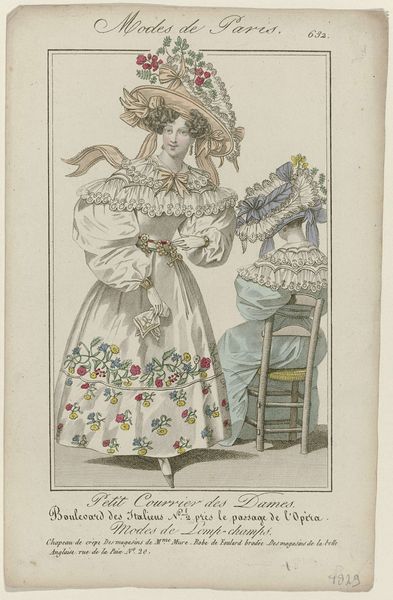
Petit Courrier des Dames, 1828, No. 569 : Capote de crèpe ornée de rubans (...) 1828
0:00
0:00
Dimensions: height 215 mm, width 138 mm
Copyright: Rijks Museum: Open Domain
Editor: Here we have "Petit Courrier des Dames, 1828, No. 569", an anonymous work, utilizing watercolor and printmaking techniques. It strikes me as such an evocative image of 19th-century Parisian fashion. What catches your eye most about this piece? Curator: As a historian, I am interested in how this image participates in and reinforces certain societal structures of its time. What does its presence within Parisian society mean? We see an elegant woman alongside a child; it is impossible not to wonder, how this type of image shapes ideas about gender, class, and the family dynamic during the Restoration era. Editor: So, you're thinking about its role as more than just a fashion plate? Curator: Exactly. It isn't only about documenting fashion. It is constructing an image of ideal womanhood, motherhood, and social status, that could be distributed thanks to the rise of print media. Consider the specific details – the expensive fabrics, the leisurely setting. Editor: The way they’re positioned feels very staged, almost artificial. Is that intentional? Curator: Very likely. Remember, images like these were carefully curated to project a certain lifestyle and aspirations. This "staging" you perceive tells us much about the performance of social roles. What kind of behaviour did this kind of images encourage or condemn? And for what specific groups of women and men? Editor: So, understanding the cultural and social context gives us a much richer reading of what seems, at first glance, to be just a pretty picture. Curator: Precisely. By considering the public role of art, and the politics embedded within images like this, we gain insight into the forces that shaped the society from which it came. Editor: That's a powerful way to look at it! It makes me see how much more there is to uncover beneath the surface of what initially seems like a simple fashion illustration. Curator: Indeed, it encourages a more critical and inquisitive approach.
Comments
No comments
Be the first to comment and join the conversation on the ultimate creative platform.

